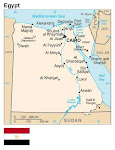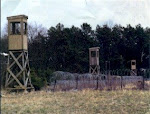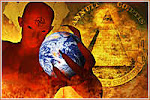 The average temperature across both the contiguous U.S. and the globe during climatological winter (December 2007-February 2008) was the coolest since 2001, according to scientists at NOAA’s National Climatic Data Center in Asheville, N.C. In terms of winter precipitation, Pacific storms, bringing heavy precipitation to large parts of the West, produced high snowpack that will provide welcome runoff this spring.A complete analysis is available online. U.S. Winter Temperature Highlights
The average temperature across both the contiguous U.S. and the globe during climatological winter (December 2007-February 2008) was the coolest since 2001, according to scientists at NOAA’s National Climatic Data Center in Asheville, N.C. In terms of winter precipitation, Pacific storms, bringing heavy precipitation to large parts of the West, produced high snowpack that will provide welcome runoff this spring.A complete analysis is available online. U.S. Winter Temperature Highlights*In the contiguous United States, the average winter temperature was 33.2°F (0.6°C), which was 0.2°F (0.1°C) above the 20th century average – yet still ranks as the coolest since 2001. It was the 54th coolest winter since national records began in 1895.
*Winter temperatures were warmer than average from Texas to the Southeast and along the Eastern Seaboard, while cooler-than-average temperatures stretched from much of the upper Midwest to the West Coast.
*With higher-than-average temperatures in the Northeast and South, the contiguous U.S. winter temperature-related energy demand was approximately 1.7 percent lower than average, based on NOAA’s Residential Energy Demand Temperature Index.
Global Highlights
*The combined global land and ocean surface temperature was the 16th warmest on record for the December 2007-February 2008 period (0.58°F/0.32°C above the 20th century mean of 53.8°F/12.1°C). The presence of a moderate-to-strong La Niña contributed to an average temperature that was the coolest since the La Niña episode of 2000-2001.
*While analyses of the causes of the severe winter storms in southern China continues, NOAA Earth System Research Laboratory scientists are focusing on the presence of unusually strong, persistent high pressure over Eastern Europe, combined with low pressure over Southwest Asia. This pattern directed a series of storms across the region, while northerly low level flow introduced cold air from Mongolia. Unusually high water temperatures in the China Sea may have triggered available moisture that enhanced the severity of these storms.
*Record Northern Hemisphere snow cover extent in January was followed by above average snow cover for the month of February. Unusually high temperatures across much of the mid- and high-latitude areas of the Northern Hemisphere in February began reducing the snow cover, and by the end of February, snow cover extent was below average in many parts of the hemisphere.
*While there has been little trend in snow cover extent during the winter season since records began in the late 1960s, spring snow cover extent has been sharply lower in the past two decades as global temperatures have increased.
February Temperature Highlights
*February was 61st warmest in the contiguous U.S. and 15th warmest globally on record. For the U.S., the temperature was near average, 0.2°F (0.1°C) above the 20th century average of 34.7°F (1.5°C), which was 2.0°F (1.1°C) warmer than February 2007.
*Globally, the February average temperature was 0.68°F/0.38°C above the 20th century mean of 53.8°F/12.1°C.
*The combined global land and ocean surface temperature was the 16th warmest on record for the December 2007-February 2008 period (0.58°F/0.32°C above the 20th century mean of 53.8°F/12.1°C). The presence of a moderate-to-strong La Niña contributed to an average temperature that was the coolest since the La Niña episode of 2000-2001.
*While analyses of the causes of the severe winter storms in southern China continues, NOAA Earth System Research Laboratory scientists are focusing on the presence of unusually strong, persistent high pressure over Eastern Europe, combined with low pressure over Southwest Asia. This pattern directed a series of storms across the region, while northerly low level flow introduced cold air from Mongolia. Unusually high water temperatures in the China Sea may have triggered available moisture that enhanced the severity of these storms.
*Record Northern Hemisphere snow cover extent in January was followed by above average snow cover for the month of February. Unusually high temperatures across much of the mid- and high-latitude areas of the Northern Hemisphere in February began reducing the snow cover, and by the end of February, snow cover extent was below average in many parts of the hemisphere.
*While there has been little trend in snow cover extent during the winter season since records began in the late 1960s, spring snow cover extent has been sharply lower in the past two decades as global temperatures have increased.
February Temperature Highlights
*February was 61st warmest in the contiguous U.S. and 15th warmest globally on record. For the U.S., the temperature was near average, 0.2°F (0.1°C) above the 20th century average of 34.7°F (1.5°C), which was 2.0°F (1.1°C) warmer than February 2007.
*Globally, the February average temperature was 0.68°F/0.38°C above the 20th century mean of 53.8°F/12.1°C.
To read more go to:
As in the days of Noah....






















































































.bmp)

























.bmp)